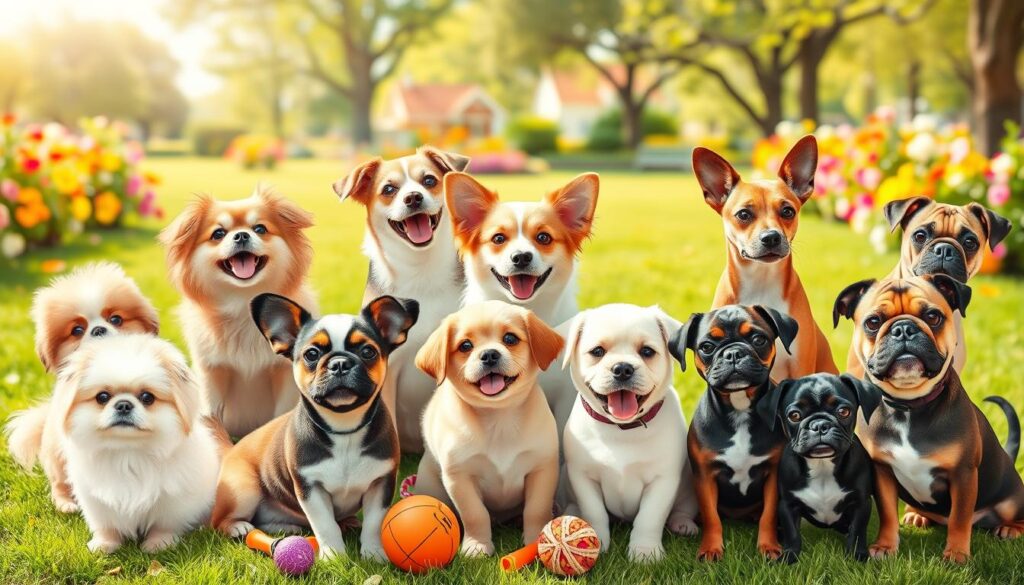When Sarah adopted a sweet Golden Retriever puppy named Max, she envisioned endless playtime in the park with other dogs. However, the first time she tried to introduce him to her neighbor’s German Shepherd, she was met with hesitation. Max whimpered and hid behind her, clearly anxious about the other dog’s size and demeanor. This experience was a pivotal moment for Sarah, highlighting the importance of understanding how to introduce a puppy to other dogs. With some research and puppy socialization tips, she learned that a thoughtful, gradual introduction could foster confidence in Max and create lasting friendships.
Sarah discovered that monitoring body language, choosing the right environment, and employing positive reinforcement techniques were key to achieving successful introductions. These lessons proved invaluable not just for Max’s well-being, but also for setting the stage for joyful interactions with other dogs in the future.
Key Takeaways
- Training a puppy to greet dogs nicely is essential for positive introductions.
- Clicker training can effectively reinforce good behavior during socialization.
- Positive reinforcement is critical for successful puppy socialization.
- Puppies should meet a variety of dogs for well-rounded development.
- Understanding a puppy’s personality can help facilitate better interactions.
- It’s important to recognize signs of stress in dogs during introductions.
Understanding Your Puppy’s Behavior
To effectively introduce your puppy to other dogs, it is essential to understand their behavior. Puppies, in their sensitive developmental stage, can exhibit various emotions, including fear and anxiety. Recognizing signs of fear in dogs is crucial for ensuring that interactions remain positive and safe.
Recognizing Signs of Fear or Anxiety
Puppies may show discomfort through behaviors such as growling, stiff body posture, and avoidance. Being able to identify these signs allows owners to intervene and reinforce positive experiences during the introduction. For instance, providing space when fear signs are evident can help calm a nervous puppy. Learning various puppy socialization techniques can create a more balanced environment, emphasizing the importance of monitoring your puppy’s emotional state.
Socialization Stages in Puppies
Puppies undergo critical socialization stages between 3 and 16 weeks of age. During this period, exposing them to various situations, people, and other animals fosters better-adjusted adults. Engaging in safe socializing techniques during these stages contributes significantly to their development. When you implement effective puppy socialization techniques, you foster strong social skills that benefit both your puppy and other dogs in the long run.
Choosing the Right Setting for Introduction
Creating a suitable environment is essential when introducing a puppy to older dogs. The chosen setting influences the success of these interactions significantly. For optimal results, consider the type of space where the introduction takes place. A calm, stress-free environment fosters better relationships and reduces anxiety for both dogs.
Neutral Ground vs. Familiar Territory
Utilizing a neutral location, such as a park or an open field, helps prevent territorial aggression when introducing a puppy to older dogs. Familiar territory might invoke possessiveness in a resident dog, complicating the process of making new friends. Starting on neutral ground encourages a more relaxed atmosphere, essential for a successful introduction. Dog owners should keep a puppy socialization checklist handy to ensure they address all key factors for a seamless meeting.
Quiet Spaces vs. Busy Parks
When it comes to the setting, quiet spaces often prove more beneficial than busy parks for initial introductions. Overstimulation in crowded environments may overwhelm a nervous puppy, causing stress during interactions. An ideal location provides the right balance, allowing both dogs to adapt comfortably. Those seeking to enhance their dog’s social skills should frequently schedule puppy playdates in less hectic surroundings, gradually acclimating them to busier settings as they grow more confident.

Preparing for the Introduction
Getting ready for the puppy training introduction to other dogs requires careful planning and attention to detail. Proper preparation helps ensure a positive experience for all involved. Having the right essentials can make a significant difference in the outcome.
Essential Supplies to Bring
Before starting the introduction, gather a few essential supplies for puppy introduction. High-value treats are crucial, as they motivate your puppy to behave well during the meeting. Consider bringing a sturdy leash or a well-fitted harness that helps maintain control of both dogs. Toys can serve as a useful distraction, creating fun moments that promote friendliness. Don’t forget waste disposal bags to keep the introduction area clean and respectful for everyone.
The Importance of Proper Leashing
Ensuring proper leashing during the introduction is vital. Each dog should be leashed to maintain safety and control throughout the process. Leashing allows for gradual adjustments; if tension arises, attached leashes enable owners to step in quickly. Starting the interaction with a distance of at least 30 feet between the dogs will help them acclimate while still feeling secure. Remember, a well-executed introduction encourages positive interactions and supports the development of healthy social skills in puppies.

To enhance your success, consider referencing guides on proper socialization techniques that further explain methods for introducing your puppy. Being well-prepared will create a more enjoyable experience for both the puppy and the other dogs involved.
Conducting the Introduction
Introducing new puppy to resident dog can be a delicate process that requires careful observation and patience. When conducting puppy introductions, it is essential to watch both dogs’ body language closely. Signs of comfort often manifest as relaxed postures and wagging tails. Conversely, discomfort can appear as growling, tense bodies, or signs of aggression. Identifying these signals can help you determine the right course of action during the introduction.
Observing Body Language
Paying attention to how the dogs behave around each other is crucial. If one dog seems anxious or overly excited, it may be helpful to create more space initially. Begin by having both puppies on leashes but positioned far enough apart to observe their reactions calmly. This distance helps ensure a less stressful experience for both dogs. Watch for their cues and make necessary adjustments for their comfort.
Keeping a Comfortable Distance
Patience plays a vital role while conducting puppy introductions. If either dog appears uncomfortable or hesitant, increase the distance between them until they calm down. This gradual approach allows each puppy to feel secure, paving the way for positive associations with the presence of the other dog. Allow for about 10-15 seconds of initial sniffing before pausing to evaluate their comfort levels. Adjusting the space between them helps create a more relaxed environment, making it easier for the puppies to become accustomed to each other.

Encouraging Positive Interactions
Creating a playful and friendly environment for puppies to meet other dogs is essential for fostering healthy relationships. Socialization tips for puppies strongly emphasize the importance of rewarding good behavior, facilitating successful introductions, and ensuring that positive interactions take center stage.
Rewarding Good Behavior
Developing a connection with your puppy can be greatly enhanced by rewarding good behavior during interactions with other dogs. Verbal praise or tasty treats can encourage desired actions while allowing puppies to understand what behaviors are favorable. This positive reinforcement not only rewards good behavior but also builds confidence in your puppy, promoting their desire to engage positively with other dogs.
Using Toys and Treats
Incorporating toys during puppy interactions can facilitate fun and distraction. Using toys for puppy interactions helps to divert attention from potential distractions while promoting a playful atmosphere. Puppies naturally enjoy playtime, and engaging them with toys allows their sociability to blossom. Not only does this enhance their social experiences, but it also allows for bonding moments with their furry peers. By implementing these elements, owners create a structured way for puppies to interact, laying the groundwork for healthy development.
Monitoring Ongoing Socialization
Effective monitoring of ongoing socialization is vital for developing healthy relationships between dogs. Regular playdates for dogs serve as an excellent opportunity for puppies to gain exposure and build positive interactions. By scheduling consistent playdates, you can help your puppy establish friendships and maintain social growth, setting a strong foundation for their future behavior.
Regular Playdates for Social Growth
Observing your puppy during play is essential. Look for signs of healthy relationships, such as relaxed body language, tail wagging, and playful behavior. Dogs that engage positively often show mutual respect, which is key to their social development. However, be attentive as excessive growling or signs of avoidance may signal that a dog feels uncomfortable, indicating the need for intervention. Implementing solid puppy socialization tips is crucial for ensuring safe and enjoyable interactions.
Signs of Healthy Relationships Between Dogs
To foster a balanced social environment, understanding the dynamics of dog interactions is essential. Establish boundaries and manage any excessive excitement or rough play to keep interactions controlled. Gradually exposing your puppy to various social settings will equip them with the skills needed to navigate their world confidently. Remember, consistency in monitoring dog interactions and utilizing reward-based training methods can significantly enhance the social skills of your puppy, ultimately leading to well-adjusted adult dogs.











